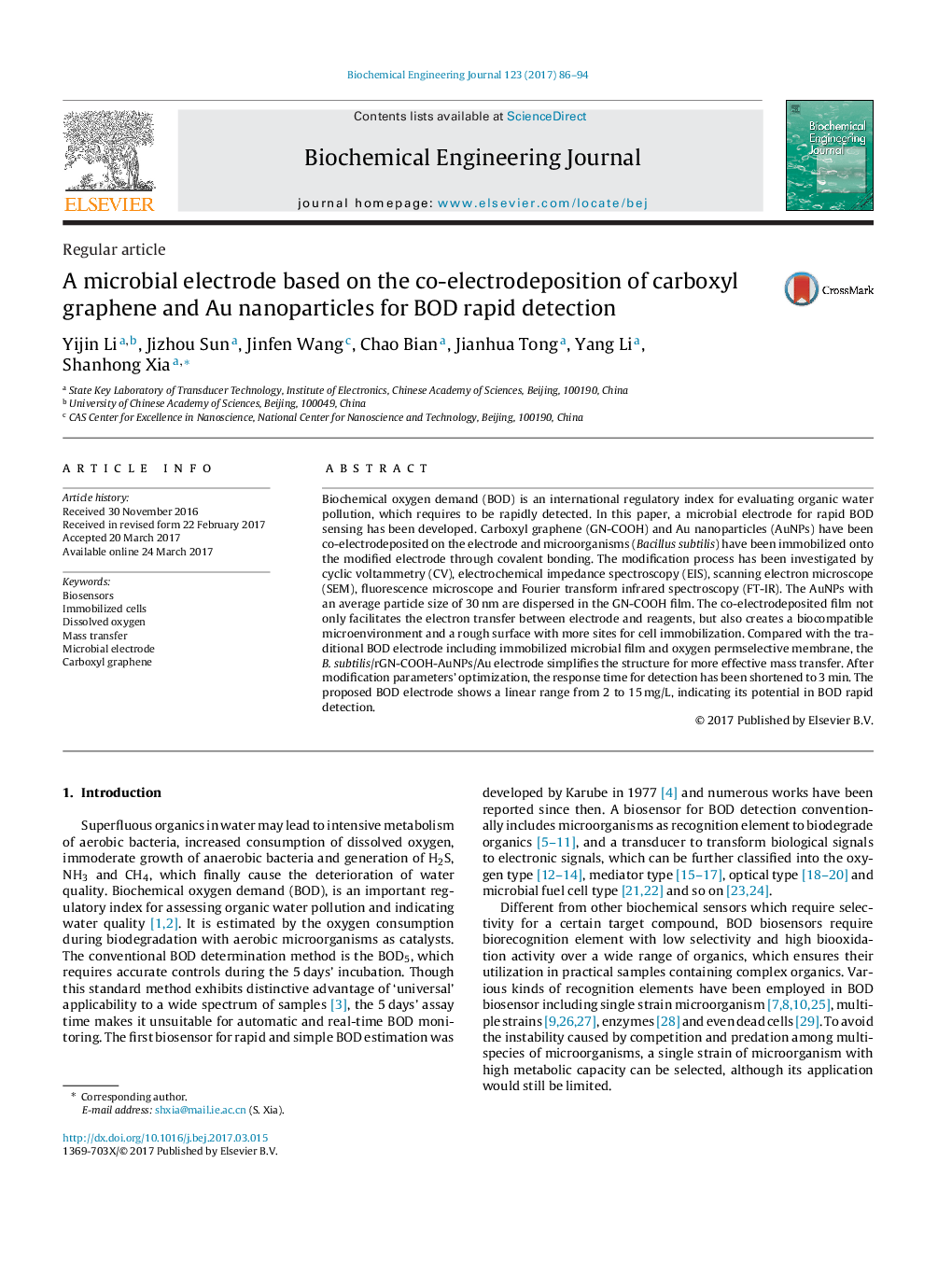| کد مقاله | کد نشریه | سال انتشار | مقاله انگلیسی | نسخه تمام متن |
|---|---|---|---|---|
| 4752111 | 1415992 | 2017 | 9 صفحه PDF | دانلود رایگان |

- Carboxyl graphene and Au nanoparticles are co-electrodeposited onto the electrode.
- B. subtilis cells are covalently bonded onto modified electrode for BOD detection.
- The electrodeposition and direct cell immobilization reduce mass transfer resistance.
- The proposed microbial sensor can give a fast BOD response in 3Â min.
Biochemical oxygen demand (BOD) is an international regulatory index for evaluating organic water pollution, which requires to be rapidly detected. In this paper, a microbial electrode for rapid BOD sensing has been developed. Carboxyl graphene (GN-COOH) and Au nanoparticles (AuNPs) have been co-electrodeposited on the electrode and microorganisms (Bacillus subtilis) have been immobilized onto the modified electrode through covalent bonding. The modification process has been investigated by cyclic voltammetry (CV), electrochemical impedance spectroscopy (EIS), scanning electron microscope (SEM), fluorescence microscope and Fourier transform infrared spectroscopy (FT-IR). The AuNPs with an average particle size of 30Â nm are dispersed in the GN-COOH film. The co-electrodeposited film not only facilitates the electron transfer between electrode and reagents, but also creates a biocompatible microenvironment and a rough surface with more sites for cell immobilization. Compared with the traditional BOD electrode including immobilized microbial film and oxygen permselective membrane, the B. subtilis/rGN-COOH-AuNPs/Au electrode simplifies the structure for more effective mass transfer. After modification parameters' optimization, the response time for detection has been shortened to 3Â min. The proposed BOD electrode shows a linear range from 2 to 15Â mg/L, indicating its potential in BOD rapid detection.
Journal: Biochemical Engineering Journal - Volume 123, 15 July 2017, Pages 86-94